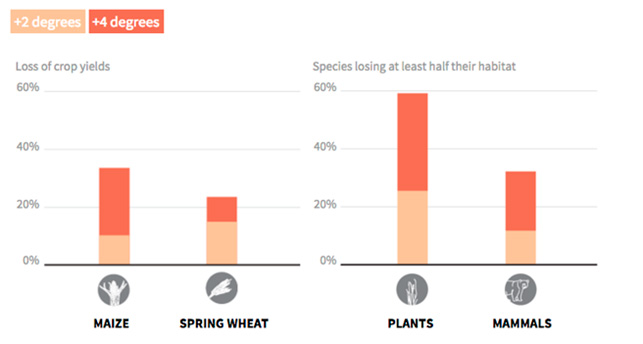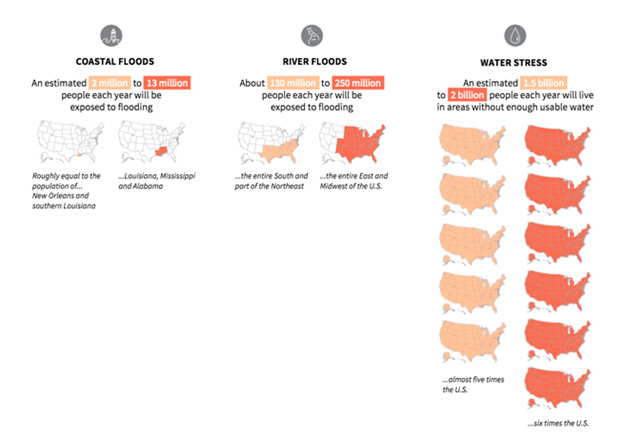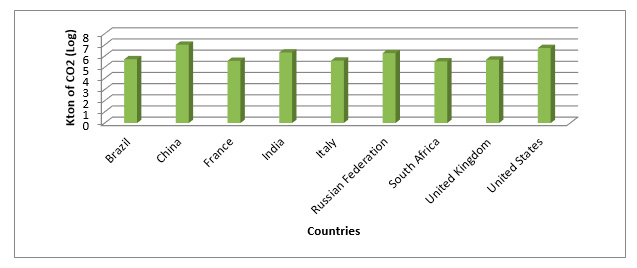On the Red Path
In
Log in if you are already registered
The 21st edition of the Conference of Parties (COP) is set to begin today, Monday November 30th in Paris. Organized by the United Nations Framework Convention on Climate Change (UNFCCC) it aims at bringing together world leaders in order to find an agreement over gas emissions and global warming for the period post 2020.
According to most climatologists, rising temperatures are a risky reality. The Earth is constantly getting warmer due to human activities, and some research states that the global temperature will be around 5 °C higher at the end of the century than it is today. This of course will pose enormous problems: the melting of the Polar caps will lead to the rising of the sea level all around the world, thus constituting a mortal threat to those countries or cities located on the sea. Furthermore this will cause big draught on some areas and flooding in others, leading to mass migration that will constitute even bigger economic and political problems.
To this regard, there are some interesting graphs and tables that clearly illustrate these changes and problems.
One of them is the following diagram. Here we can see how global temperature will be in 2100, compared to the pre-industrial era, as a function of the carbon emissions we will make in the following years.

If nothing changes, we will most likely be on the red path; this means a possible increase in temperature of around five degrees. In the unlikely event of a sudden stop of emission the temperature will follow the green track. Hence it’s clear that the Paris’ goal must lie somewhere in the middle of these two extreme forecasts.
Even though the magnitude of this change doesn’t look really big, the catastrophic effects that even a small change can trigger, can be noticed from these graphs.

If the conference proves to be a success, we will still lose more than 20% of the plants that currently exist on the planet, while if the temperature actually rises until six degrees, most of them would be extinct within 2100.
Some dire consequences will attain also humanity as more and more people will be affected by lack of water or, at the contrary, to flooding risks.

Several other conferences have been held in the past two decades: starting from Rio 1992, that marked the foundation of UNFCCC, to the Kyoto protocol of 1997. Countries endorsing this treaty were committed to reduce their carbon emission by 5% with respect to the 1990 level by 2012. Following the Kyoto protocol several other conferences have taken place: worth to remember was Durban, in 2011, where a working panel that was to lead to this year Paris’ conference was established.
The main scope of the conference is to set an agreement where every country commits to reduce its own temperature, by cutting fossil fuels emissions, in order to keep them within two degrees from the pre-industrial era. Even though there is not a strong scientific consensus around this benchmark, it is widely believed that this is the maximum the world can afford in order not to let the Global Warming become an irreversible phenomena.
There are several concerns about the feasibility of an agreement that meets this criteria. However some cautious optimism is also brought on by several analysts. What makes them prone to believe Paris may be eventually a success, is the fact that several countries have already decided to cut emissions even outside the UN contest. For example the European Union has decided to lower its emission by 40%, within 2030, referring to the 1990 level. The US has passed from 17% to 28% for the same period, while China has declared to put a cap on them by 2030.
And observing the CO2 emission of these last two countries, we can actually see how pivotal their commitments are. According to the data collected by the Edgar research center, and shown in the table below, China is the biggest polluter, closely followed by the United States. These two countries together emitted more than 15 million kiloton of CO2 just in the year 2013.

COP21 will end on December 11th. For the reasons explained above, its success or failure will affect our and future generations.




